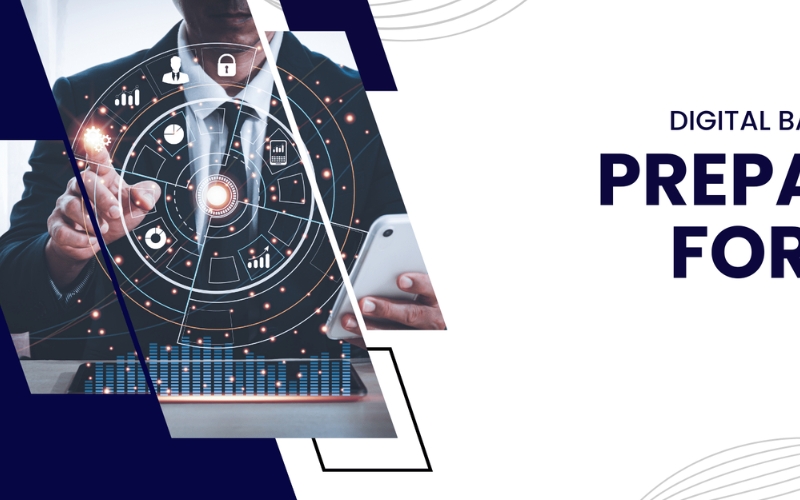Trends to Watch in 2025 Banking the financial landscape, becoming an essential part of how individuals and businesses manage their finances. As we approach 2025, the evolution of digital banking is poised to accelerate, driven by advancements in technology, shifts in consumer behavior, and an increasingly interconnected global economy. From mobile-first platforms to artificial intelligence (AI) and blockchain integration, the future of digital banking promises to redefine convenience, security, and accessibility in financial services.
This article explores the key trends that will shape digital banking in 2025, offering insights into how the industry is evolving and how both consumers and financial institutions can prepare for the changes ahead.
1. The Rise of Neobanks and Challenger Banks
Trends to Watch in 2025 Banking, mobile-only financial institutions—have rapidly gained traction in recent years. These banks are typically built with advanced technology and offer streamlined services without the overhead costs associated with traditional banks. By 2025, neobanks are expected to dominate the financial landscape, offering a wide range of services including savings, lending, and payments, all through intuitive mobile applications.
Unlike traditional banks, neobanks often focus on specific customer niches, such as millennials, gig economy workers, or underserved communities, and they use innovative business models to provide faster, cheaper, and more user-friendly services. Their ability to leverage AI, machine learning, and data analytics will allow them to offer highly personalized experiences, making banking not only more accessible but more efficient.
Key Impact:
- Lower costs due to the absence of physical branches.
- Increased customer-centric services, such as personalized financial advice and real-time insights.
- Competition for traditional banks, forcing them to innovate and enhance digital offerings.
2. Artificial Intelligence (AI) and Machine Learning Integration
Trends to Watch in 2025 Banking are already making significant strides in digital banking, and their role will become even more pronounced by 2025. AI can enhance a wide range of banking functions, from customer service and fraud detection to investment advice and loan origination.
By 2025, AI-driven chatbots will become even more sophisticated, capable of handling complex queries, providing personalized financial advice, and improving the overall customer experience. AI will also play a critical role in predictive analytics, helping banks assess risks, forecast market trends, and personalize products and services based on individual customer behavior.
In the realm of fraud prevention, machine learning algorithms will become more adept at detecting unusual transaction patterns, preventing fraud before it happens, and ensuring the security of digital banking platforms.
Key Impact:
- Improved customer service with faster response times and personalized support.
- Enhanced security through AI-powered fraud detection.
- Smarter financial products tailored to individual needs and behaviors.
3. The Expansion of Open Banking
Open banking refers to the practice of banks sharing customer data securely with third-party financial service providers via APIs (Application Programming Interfaces). This enables customers to access a wider range of financial services and allows fintech companies to create innovative products and solutions.
By 2025, open banking will become even more mainstream, as regulations like the EU’s PSD2 (Payment Services Directive 2) and the UK’s Open Banking Standard continue to expand. With the adoption of open banking, consumers will be able to manage multiple financial accounts from different institutions in one place, allowing for easier budgeting, saving, and investing.
Banks will need to embrace open banking not just to stay compliant with regulations but also to foster collaboration with fintechs and offer more competitive, flexible financial products.
Key Impact:
- Greater consumer control over their financial data and access to better deals.
- Increased competition among financial institutions and fintech firms.
- Collaboration opportunities between traditional banks and fintech startups.
4. Blockchain Technology and Cryptocurrency Integration
Blockchain technology has the potential to revolutionize banking by providing a secure, transparent, and decentralized system for recording financial transactions. While cryptocurrency has already made waves, its integration into mainstream digital banking is expected to grow significantly by 2025.
Several central banks are exploring Central Bank Digital Currencies (CBDCs), which could play a pivotal role in reshaping the global financial system. CBDCs are digital currencies issued by governments and are seen as a way to enhance payment efficiency and financial inclusion. In addition to CBDCs, blockchain-based systems will continue to offer faster and more secure cross-border payments, reducing the reliance on traditional payment intermediaries.
Banks will also begin to offer cryptocurrency-related services, such as digital wallets and trading platforms, catering to the growing demand for cryptocurrency investment and adoption.
Key Impact:
- Improved payment efficiency with blockchain’s secure and low-cost transactions.
- Adoption of digital currencies, including CBDCs and cryptocurrencies, by financial institutions.
- Increased security in digital banking with blockchain’s tamper-proof ledgers.
